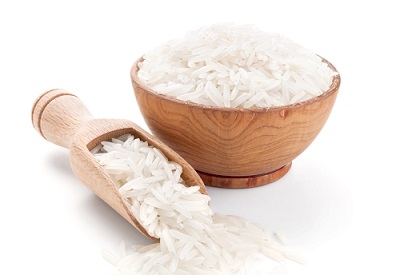
Basmati rice: Diabetic-friendly, decreases risk of death?
Diabetics are more particular about the type of food they eat. This is because the type of food can either increase or decrease their blood sugar content.
Advertisement
Rice has been a subject of controversy for diabetics. However, others believe that not all rice is created equal and some types are diabetic-friendly. This is because white rice has a glycemic index of 89. Hence, I examine the science behind Basmati rice on our health in this article.
Nutrition facts
The nutritional value of Basmati rice varies depending on the type one buys. However, in the generic terms, each type is high in carbs and calories, as well as micronutrients like folate, thiamine, and selenium.
The US Department of Agriculture states that: One cup (163 grams) of cooked white basmati rice contains the following:
Calories: 210
Protein: 4.4 grams
Fat: 0.5 grams
Carbs: 45.6 grams
Fibre: 0.7 grams
Sodium: 399 mg
Folate: 24 per cent of the
Daily Value (DV)
Thiamine: 22 per cent of the DV
Selenium: 22 per cent of the DV
Niacin: 15 per cent of the DV
Copper: 12 per cent of the DV
Iron: 11 per cent of the DV
Vitamin B6: 9 per cent of the DV
Zinc: 7 per cent of the DV
Phosphorus: 6% of the DV
Magnesium: 5% of the DV
The same organisation further held that brown basmati rice is somewhat higher in calories, carbs and fibre. Furthermore, the magnesium, vitamin E, zinc, potassium and phosphorus are more as compared to white basmati rice.
Basmati: Scientific justification
Brown basmati rice is regarded a whole grain, this means that it contains all three parts of the kernel — the germ, bran and endosperm. Why are whole grains good for our health?
One study happens to answer this: Aune et al. (2016) analysed 45 studies and found that whole grain consumption decreased ones risk of heart disease, cancer and premature death.
A previous review by Aune et al. (2013) also reported that consumption of whole grains, including brown rice, reduced ones risk of type 2 diabetes.
What is more interesting is that: one randomised controlled trial, Vitaglione et al;(2015) examined 80 respondents in an 8-week study and found that substituting refined grains with whole grains decreased ones levels of inflammatory markers.
Basmati, supplemented
It is believed that the white basmati rice is mostly supplemented to improve some nutrients that were lost in the processing stages to enhance the nutritional value. This is done to improve our vitamins and mineral content.
Rice and other grains are regularly augmented with iron and B vitamins such as folic acid, thiamine and niacin.
Basmati, arsenic
Hong et al.(2014) study found that basmati was normally lower in arsenic, a heavy metal that could destroy our health and in turn reduce the risk of diabetes, heart problems, and some cancers juxtaposed to other types of rice.
Also, arsenic accrues a lot in rice as compared to other grains. This raises many health issues for frequent consumers of white rice.
But the good news is that, basmati rice from California, India, or Pakistan have the lowest levels of arsenic, juxtaposed to other rice varieties (Davis et al; 2017). Also, Basmati brown rice types have higher levels of arsenic than white rice, as it accrues in the hard outer bran layer.
White basmati is a refined grain, unlike the brown basmati; this affects the nutritional content. Two meta-analysis, (Musa-Veloso et al; 2018; Hu et al; 2012) found that eating more refined grains could negatively affect blood sugar and potentially increase the risk of type 2 diabetes.
Additionally, another study, Kim et al.(2012) examined over 10,000 people and found that eating more white rice increased the risk of obesity.
Another study, Ahn et al. (2013) examined 26,006 people and found a link between white rice intake and a higher risk of metabolic syndrome, a group of conditions that can increase your risk of heart disease, stroke and type 2 diabetes. This could be due to white rice’s high amount of carbs and low amount of fibre compared with brown rice.
This means, although white basmati rice can be eaten in moderation, brown basmati may be a better overall option for your health.
Take Home
So from the review, is basmati diabetic-friendly? It appears so:
According to the Canadian Diabetes Association, basmati, brown, wild, short, and long grain rice has a medium glycemic index (between 56 and 69), as opposed to jasmine and instant white rice with a glycemic index of 89, thus making it more suitable for diabetics as compared to certain other grains and products made from white flour.
Besides, it also has many health benefits from studies.
The writer is President, Nyarkotey College of Holistic Medicine & Technology (NUCHMT)/African Naturopathic Foundation.
He adheres to strict sourcing, studies and academic papers in his articles, which are for educational purposes only and not medical advice for treatment. E-mail: [email protected].




